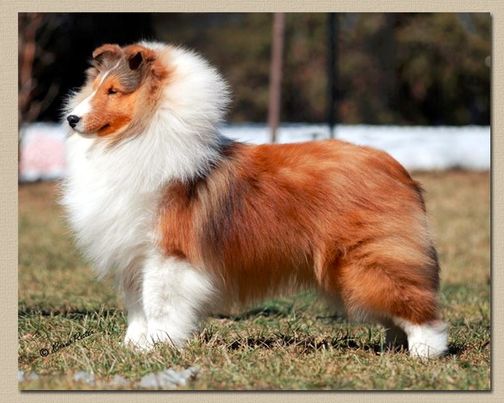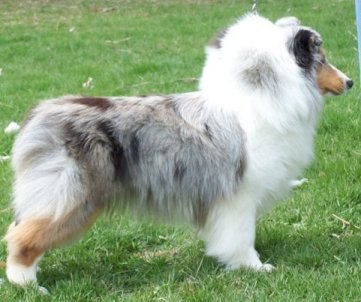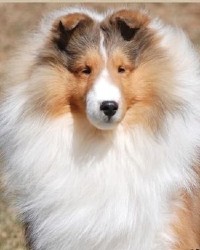History and Origin: This small breed originated in the harsh and rough highlands of the Shetland Islands of Scotland. He was probably descended from such breeds as the King Charles Spaniel, Scottish Collie, Pomeranian, maybe Border Collie and another now extinct breed. His original appearance was rather more spitz like, but later crosses with the rough collie reduced the size and produced today’s easily recognizable type. He was first called the Shetland collie but this caused confusion amongst the rough collie breeders of that time. The breed was recognized by the The Kennel Club, (Britain) in 1909. This breed is now usually referred to as the Sheltie.
General Appearance: Resembling the Rough Collie only in a miniature form, the Shetland Sheepdog is double coated, agile and sturdy, alert and active, but also gentle and reserved. The coat is long and thick and this breed is considered to be a working breed of the herding type. The heavy coat was needed in his native Scotland to protect him from the elements.
Coat and Colour: Double coated with the outer coat being long straight and rather course while the under coat is thick, short and downy. There is an abundant mane of longer hair around the neck, and the tail is heavily coated. There is shorter hair on the back of the legs called feathering but the face, feet and fronts of legs are fairly short haired and smooth. Colours are black, merle and sable with white markings and/or tan. The breed is an easy keeper coat wise, only shedding once a year. A regular brushing and bathing when needed is all that is required. If they do get muddy, once they are dry the dirt will fall right off that harsher outer coat. Mats behind the ears should be tended to regularly .

Height and Weight: 13-16 inches (33-40.6 cms) measured to top of the shoulders.
Feeding: A good quality food is acceptable and the breed is generally fed once daily with the addition morning or evening of a hard cookie as a treat. Plain yogurt can be added to the diet until about one year of age. Young puppies are fed more frequently.
Training and Obedience; The sheltie is a very smart breed, they love to please their owners and so will do very well in any type of obedience training They excel in agility as well as herding instinct tests and trial.
Activity: They love to run, and can be at home in the country as well as quite happy living in apartments in the city as long they are loved and can have a daily walk. They aren’t natural diggers nor do they choose to jump fences but of course as with any breed, care must be taken to give them a safe enclosed space for exercise. They will bark when highly excited but are generally quiet otherwise.
Temperament: A loving sweet tempered breed, they are comfortable with children cats and other animals.


